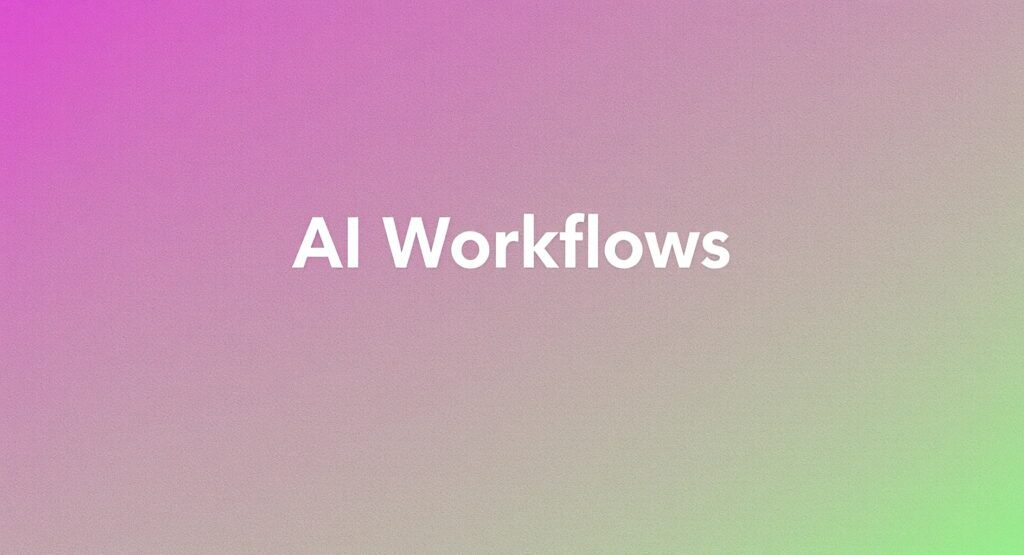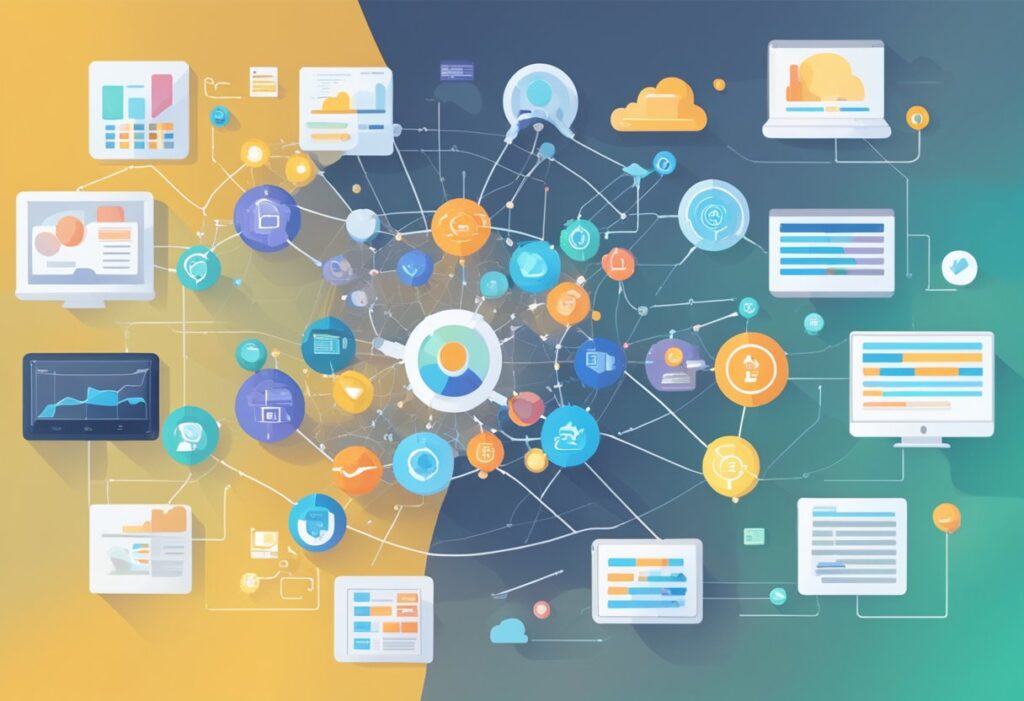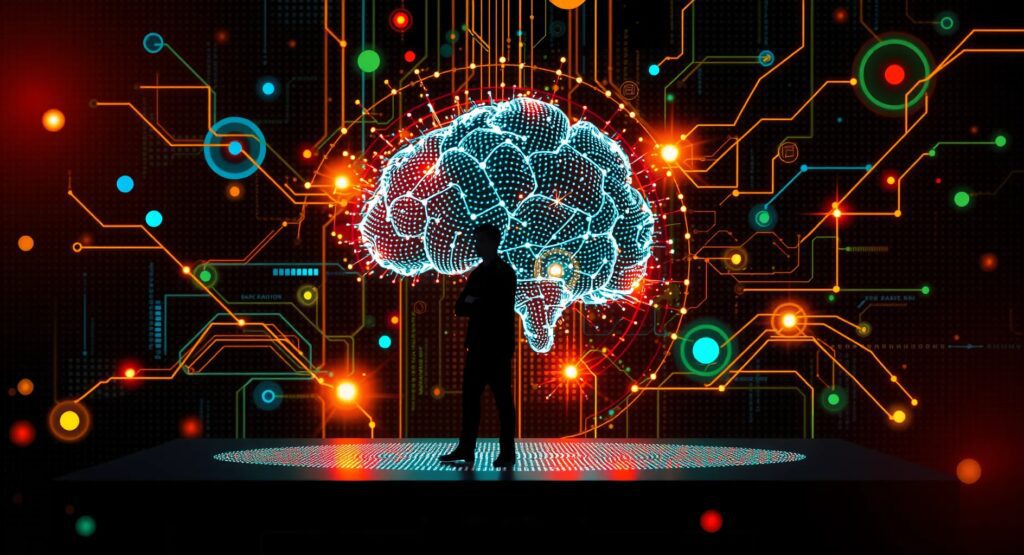
Enhance AI Efficiency with Parallel Processing
Multi-Agent Systems (MAS) represent a significant advancement in optimizing AI workflows. By distributing tasks among multiple intelligent agents, each designed to handle specific aspects of the workflow, MAS allows organizations to achieve unparalleled efficiency, scalability, and resilience. This approach not only accelerates the completion of complex tasks but also ensures robust and adaptive systems capable of thriving in dynamic environments.
What Are Multi-Agent Systems (MAS)?
Multi-Agent Systems (MAS) are frameworks in which multiple autonomous entities, known as agents, work together to achieve specific goals. Each agent in a MAS can perform tasks independently, communicate with other agents, and adapt to changes in the environment. This system mirrors the collaborative nature of human teams but with the added efficiency of AI.
Agents in a MAS can be designed to handle different functions, such as data collection, processing, decision-making, and even interacting with humans. These systems are particularly valuable in scenarios where complex tasks need to be broken down into smaller, manageable parts that can be executed simultaneously or sequentially.
The Role of MAS in AI Workflows
AI workflows often involve multiple stages, from data preprocessing and model training to deployment and monitoring. Traditionally, these tasks might be handled by a single monolithic system or require significant human intervention. However, as AI applications scale, these approaches can become inefficient and prone to bottlenecks.
Multi-Agent Systems optimize these workflows by allowing different agents to specialize in specific tasks. For example, one agent might be responsible for data ingestion, another for cleaning and preprocessing, and a third for model training. These agents can work in parallel, significantly speeding up the workflow while reducing the risk of errors.
Key Benefits of Using MAS in AI Workflows
- Scalability: As the complexity of AI systems grows, MAS allows for easy scaling by adding more agents to handle increased workloads without overhauling the entire system.
- Flexibility: MAS are highly adaptable, enabling organizations to reconfigure agents as needed to meet changing requirements or to optimize performance.
- Resilience: In a MAS, if one agent fails or encounters an issue, other agents can take over its tasks, ensuring that the workflow continues with minimal disruption.
- Efficiency: By distributing tasks among multiple agents, MAS can significantly reduce the time needed to complete complex workflows, leading to faster and more reliable AI operations.
Key Ways MAS Optimize AI Workflows
Parallel Processing
- Task Distribution: MAS breaks down complex tasks into smaller, manageable sub-tasks. Different agents execute these sub-tasks simultaneously, significantly reducing the time required to complete workflows.
Specialization
- Agent Expertise: Each agent specializes in a particular domain or function, allowing for more efficient task handling. For instance, one agent may excel in data preprocessing, another in model training, and yet another in evaluation. This specialization ensures that the most suitable agent handles each part of the workflow, enhancing overall efficiency and effectiveness.
Scalability
- Resource Management: MAS dynamically allocates resources based on the current workload and computational resource availability. This dynamic allocation ensures optimal resource utilization and scalability, allowing the system to handle varying workloads effectively.
Robustness and Fault Tolerance
- Redundancy: MAS provides redundancy through multiple agents. If one agent fails, others can take over its tasks, ensuring workflow continuity without significant interruption. This redundancy enhances the system’s robustness and fault tolerance, making it more reliable.
Flexibility and Adaptability
- Dynamic Adjustment: MAS agents adapt to changes in the environment or workflow requirements. They reconfigure themselves to address new tasks or adjust their strategies based on real-time feedback. This flexibility allows the system to remain effective even in dynamic or unpredictable scenarios.
Improved Decision Making
- Collaborative Intelligence: Agents collaborate and share information, leading to more informed decision-making processes. This collaboration results in more accurate and efficient outcomes, as agents leverage collective knowledge and expertise to solve complex problems.
Complex Problem Solving
- Distributed Problem Solving: MAS tackles complex problems by distributing different parts of the problem among various agents. By leveraging collective intelligence, MAS finds solutions more effectively.
Enhanced Learning Capabilities
- Distributed Learning: Agents learn from their interactions with the environment and other agents. This distributed learning approach leads to faster and more robust learning processes, enhancing the overall AI workflow.
Reduced Bottlenecks
- Load Balancing: MAS prevents bottlenecks by distributing tasks, ensuring that no single point of the workflow becomes overloaded. This load balancing ensures a smoother and more efficient workflow.
Cost Efficiency
- Optimized Resource Usage: MAS optimizes resource usage through efficient task distribution and resource allocation. This optimization leads to cost savings, as computational resources are used more effectively, reducing the need for expensive, high-performance hardware.
Distributed Data Management
- Data Handling: MAS assigns agents to handle different data streams or sources. This distribution ensures efficient data collection, cleaning, and preprocessing in parallel, reducing the time and effort required to manage large datasets.
Autonomous Operation
- Self-Management: MAS agents operate autonomously, making decisions without constant human intervention. This autonomy allows continuous workflow operation, even in the absence of human oversight.
Interoperability
- Integration: MAS integrates seamlessly with other systems and technologies. Agents communicate with different software and hardware components, facilitating smoother interactions and data exchanges across various parts of the workflow.
Enhanced Monitoring and Control
- Real-Time Monitoring: MAS agents continuously monitor the status and performance of different workflow components. This real-time monitoring allows prompt issue detection and immediate corrective actions, ensuring smooth workflow execution.
Context-Aware Processing
- Adaptive Responses: MAS agents understand and respond to the context of the tasks they perform. This context awareness enables agents to adjust their actions based on specific workflow requirements and conditions.
Human-Agent Collaboration
- Synergy: MAS facilitates better collaboration between human operators and AI agents. Agents assist humans by providing recommendations, performing routine tasks, and handling data-intensive processes, allowing human operators to focus on higher-level decision-making.
Privacy and Security
- Secure Data Handling: MAS agents follow specific protocols to handle sensitive data securely. This secure handling ensures that data privacy and security are maintained throughout the workflow.
Distributed Optimization
- Optimization Algorithms: MAS employs distributed optimization techniques, where multiple agents work together to find the optimal solution to a problem. This distributed approach leads to more efficient and effective optimization compared to centralized methods.
Resource-Aware Scheduling
- Dynamic Scheduling: MAS agents dynamically schedule tasks based on resource availability and task priority. This dynamic scheduling ensures that high-priority tasks are completed promptly and resources are used efficiently.
Learning from Experience
- Continuous Improvement: MAS agents continuously learn from their experiences and improve their performance over time. This learning capability ensures that the MAS becomes more efficient and effective with each workflow iteration.
Modularity and Reusability
- Reusable Components: MAS allows for the creation of modular agents that can be reused across different workflows. This modularity reduces development time and effort, as existing agents can be adapted for new tasks.
Enhanced Communication
- Coordination: MAS agents communicate and coordinate with each other to synchronize their actions and share information. This enhanced communication ensures that all parts of the workflow are aligned and working towards the same goal.
Customizable Workflows
- Tailored Solutions: MAS can be customized to fit the specific needs of different workflows. Agents perform specialized tasks, providing solutions precisely aligned with workflow requirements.
Proactive Problem Solving
- Anticipatory Actions: MAS agents proactively identify potential issues and take preemptive actions to prevent workflow disruptions. This proactive approach minimizes downtime and ensures smoother operations.
Distributed Decision Making
- Decentralized Control: MAS distributes decision-making across multiple agents instead of relying on a central decision-maker. This decentralized approach enhances the system’s robustness and ensures that decisions are made closer to where the action occurs.
Conclusion
Harnessing the power of Multi-Agent Systems is a game-changer for AI workflows. By distributing tasks, specializing agents, dynamically managing resources, and adapting to changing conditions, MAS provides a robust and efficient solution for complex AI challenges. Leveraging MAS allows organizations to significantly enhance their AI capabilities, leading to faster, more accurate, and cost-effective outcomes. The future of AI lies in systems that are not only intelligent but also collaborative and adaptable, with MAS standing at the forefront of this evolution.
FAQ’s – Multi-Agent Systems
What are Multi-Agent Systems in AI?
Multi-Agent Systems (MAS) in AI are systems composed of multiple intelligent agents that interact and collaborate to solve complex problems. Each agent is designed to handle specific tasks or functions, working together to achieve a common goal more efficiently than a single agent could.
How do Multi-Agent Systems optimize AI workflows?
MAS optimize AI workflows by distributing tasks among multiple agents, allowing for parallel processing. This approach breaks down complex tasks into smaller, manageable sub-tasks that can be executed simultaneously, reducing overall workflow completion time and enhancing efficiency.
What are the benefits of using Multi-Agent Systems in AI?
The benefits of using MAS in AI include improved efficiency, scalability, fault tolerance, adaptability, and decision-making. MAS also enable better resource management, enhanced learning capabilities, and the ability to handle complex problem-solving tasks more effectively.
How do MAS improve scalability and efficiency in AI?
MAS improve scalability by dynamically allocating resources based on current workloads and computational resource availability. They enhance efficiency by enabling parallel processing, task specialization, and distributed problem-solving, ensuring optimal utilization of resources and faster workflow completion.
Can Multi-Agent Systems enhance decision-making processes?
Yes, Multi-Agent Systems enhance decision-making processes through collaborative intelligence. Agents share information and insights, leading to more informed and accurate decisions. This collaborative approach leverages the collective knowledge and expertise of multiple agents.
What are the key components of Multi-Agent Systems?
The key components of MAS include intelligent agents, communication protocols, coordination mechanisms, and a shared environment. Each agent operates autonomously but collaborates with other agents through defined protocols to achieve common objectives.
How do MAS contribute to fault tolerance in AI workflows?
MAS contribute to fault tolerance by providing redundancy. If one agent fails, others can take over its tasks, ensuring that the workflow continues without significant interruption. This redundancy makes the system more robust and reliable.
In what ways do MAS facilitate human-agent collaboration?
MAS facilitate human-agent collaboration by assisting humans with routine tasks, data-intensive processes, and providing recommendations. This allows human operators to focus on higher-level decision-making and more complex problem-solving, creating a synergistic relationship.
How do Multi-Agent Systems handle distributed data management?
MAS handle distributed data management by assigning different agents to manage various data streams or sources. This approach ensures efficient data collection, cleaning, and preprocessing in parallel, reducing the time and effort required to manage large datasets.
What are the cost benefits of implementing Multi-Agent Systems in AI?
The cost benefits of implementing MAS in AI include optimized resource usage, reduced need for expensive high-performance hardware, and increased efficiency in task execution. By distributing tasks and resources effectively, MAS lower operational costs and enhance overall cost-efficiency.
Resources on Optimizing AI Workflows with Multi-Agent Systems
Here are some valuable resources to learn more about optimizing AI workflows with Multi-Agent Systems (MAS):
- Multi-Agent Systems: An Introduction to Distributed Artificial Intelligence
- Description: This book provides a comprehensive overview of the theory and practice of MAS.
- Link: Springer
- AI Workflows and Multi-Agent Systems: A Practical Guide
- Description: This guide explores practical implementations and benefits of using MAS in AI workflows.
- Link: O’Reilly
- IEEE Transactions on Systems, Man, and Cybernetics: Multi-Agent Systems
- Description: A collection of research papers on MAS and their applications in various fields.
- Link: IEEE Xplore
- The Role of Multi-Agent Systems in AI Workflows
- Description: This article discusses the role and advantages of MAS in enhancing AI workflows.
- Link: ResearchGate
- Multi-Agent Systems and Applications
- Description: This conference proceeding covers recent advancements and applications of MAS in AI.
- Link: SpringerLink
- Optimization of AI Workflows with Multi-Agent Systems
- Description: A detailed exploration of how MAS can be utilized to optimize AI workflows.
- Link: MDPI
- AI and Multi-Agent Systems: Collaboration and Efficiency
- Description: Insights into how AI and MAS collaborate for improved efficiency.
- Link: ACM Digital Library
- Parallel Processing with Multi-Agent Systems in AI
- Description: This resource delves into the benefits of parallel processing in MAS.
- Link: ScienceDirect
- Scalability and Robustness in Multi-Agent Systems
- Description: A paper discussing the scalability and robustness of MAS in AI applications.
- Link: IEEE Xplore
- Flexibility and Adaptability of Multi-Agent Systems in AI
- Description: Examines how MAS offer flexibility and adaptability in dynamic environments.
- Link: Wiley Online Library
These resources provide a mix of theoretical background, practical applications, and research findings on the use of Multi-Agent Systems in optimizing AI workflows.





